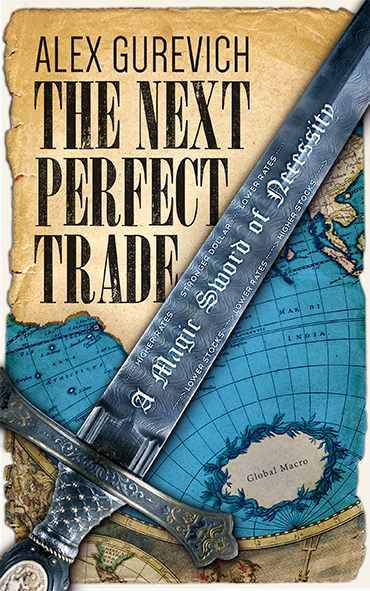What is the target on the short EURUSD
position? Are all the dollar bulls just looking at the charts? Or are they
throwing out targets at random: “Parity”, “Post-inception
low”, and so on?
They are many ways to look at the “fair
value” of a currency exchange. There are static approaches such as PPP
(purchasing power parity) and dynamic models involving interest rate
differentials, trade, and who knows what other factors.
George Soros emphasized in “The
Alchemy of Finance” that any “equilibrium” value is elusive. I, in turn, have likened developed world
currency pairs to a pendulum in Chapter 1 of ”The
Next Perfect Trade“. However, in contemplating a pendulum it is useful
to know where the "bottom”, or the neutral position, is.
First, any “value” principle may
apply to a market price only at some point in the future. The present price is
what it is. Do not confuse this with an endorsement of EMT (Efficient Market
Theory). We make money by finding value in projected market forwards. But
current price is a reality. And denying reality, as Buddhism teaches, only
causes stress.
So how would I estimate the long-horizon
neutral point? It would be hard to do if EURUSD were in a secular trend but,
fortunately for this exercise, it is not.
EUR: Since March, 31, 1975 (average 1.1930)

So why don’t we just assume a simple mean-reversion
and take the average: 1.1930.
Of course, one might argue that
post-inception data is more relevant.
EUR: Since Jan 1, 1999 (average 1.2176)

The average here is 1.2176?
Or, maybe let’s just say 1.20. Imprecise?
Yes, but who is more precise?
Wait, if I am thinking of 1.20 as a neutral
point, why am I still short at 1.12? I could just say: remember the pendulum.
The cyclical trend is intact; it is still swinging. But in this post I am
focusing on a complimentary approach.
We are in an unusual place with interest rate
differential being very high and policy divergence favoring the dollar. How do we account for the idiosyncrasy of the
current environment?
I suggest avoiding it by looking ten years
forward. On this time horizon any economic predictions are virtually
meaningless. Those who think that the current situation is bound to persist in
ten years, think ten years back. That’s all I have to say.
So instead of challenging the reality of the
current exchange rate I challenge the ten year forward which as I am writing
this is around 1.33; well above the historical average.
EUR and 10 yr EUR (FX): from 2013 to present

Notice that due to the widening rates
differential, despite a much lower spot, the ten year forward is not far from
where it was three years ago. And guess what spot price would have brought the
forward to the average given current rates environment? PARITY. Hence,
parity is not bad as far as shorter-term magnets go.
So am I planning to hold the trade for ten
years for an uncertain 10% gain?
As written in my book, such a value pull (or
carry if you wish) provides an extra wind in my sails. But this is where other
considerations such as pendulum pattern or secular skepticism in the Euroland
come into play.
Once I estimate my neutral point as 1.20, I
look at the 10 yr forward and expect it to swing through this point by at least
another 10%. Thus if I am correct I can hope for a 20% move on a horizon much
shorter than ten years.


